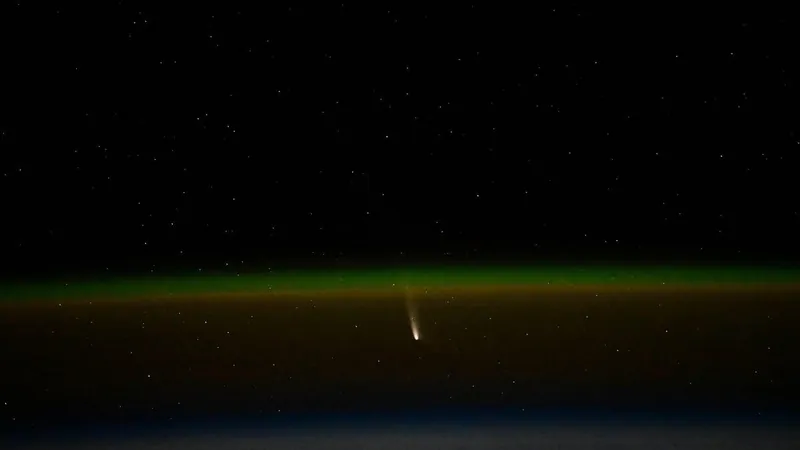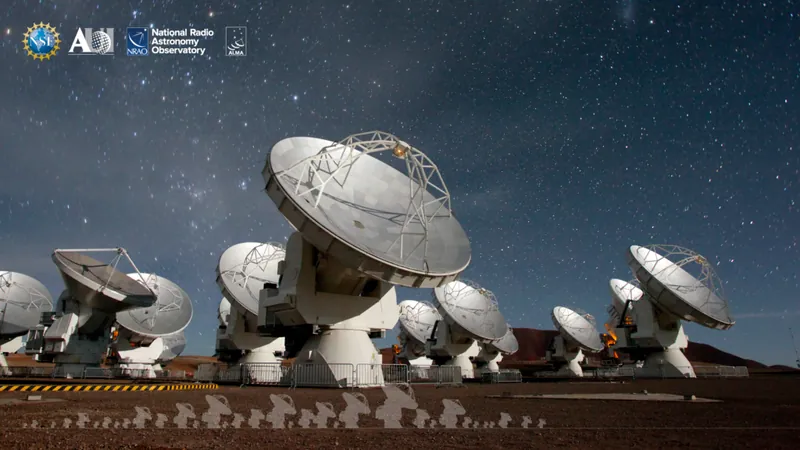
Astronauts Capture Spectacular Photos of Comet A3 from the International Space Station!
2024-09-28
In an astronomical treat, Comet Tsuchinshan-ATLAS, officially known as C/2023-A3 or Comet A3, is providing a rare viewing opportunity for space enthusiasts as it approaches the sun. Unlike meteors that streak across the night sky, comets are infrequently visible from Earth. However, thanks to NASA astronauts aboard the International Space Station (ISS), we are getting firsthand glimpses of this icy celestial spectacle.
On September 22, NASA astronaut and seasoned astrophotographer Don Pettit shared breathtaking images of Comet A3 via social media platform X. The stunning visuals showcase the bright comet against the profound backdrop of space, with the gentle curve of Earth’s glow visible in some shots. “It is totally awesome to see a comet from orbit,” Pettit exclaimed, remarking on the unique perspective offered from the ISS.
Comets, often referred to by NASA as “cosmic snowballs,” are comprised of frozen gases, rock, and dust, and travel on elliptical orbits around the sun. As they approach our star, they heat up, and a fascinating process begins — the comet sheds dust and gas, forming a luminous tail. Although Comet A3’s tail is not yet visible to the naked eye, Pettit has noted that it is gearing up for a spectacular display, growing brighter each day as it moves closer to the sun.
His colleague, Matthew Dominick, utilized his mathematical skills to pinpoint the comet's location, allowing Pettit to aim his camera accurately. In a previous tweet, Dominick likened A3 to a “fuzzy star” when viewed without telescopes, heightening anticipation for its evolving visibility in the night sky.
As Comet A3 approaches its closest point to the sun, known as perihelion, on September 27, it could potentially brighten enough for enthusiastic skywatchers to see from the ground. There is a slight concern amongst astronomers that comets can fragment as they get closer to the sun, but rest assured, Comet A3 poses no threat to our planet.
For those eager to catch a glimpse, the best viewing opportunities are expected around mid to late October, particularly on October 12, when the comet makes its closest approach to Earth. Astrophotographers on the ground have already started capturing impressive images of A3, but casual observers may need a telescope to join the exciting hunt.
As Comet A3 navigates its celestial journey, it holds the potential to become a coveted highlight in the astronomical calendar. However, comets are notoriously unpredictable—will Comet A3 dazzle us or fizzle out? One thing is for sure: the astronauts aboard the ISS are committed to keeping us informed about this cosmic phenomenon. Stay tuned as this icy visitor continues its approach!


 Brasil (PT)
Brasil (PT)
 Canada (EN)
Canada (EN)
 Chile (ES)
Chile (ES)
 España (ES)
España (ES)
 France (FR)
France (FR)
 Hong Kong (EN)
Hong Kong (EN)
 Italia (IT)
Italia (IT)
 日本 (JA)
日本 (JA)
 Magyarország (HU)
Magyarország (HU)
 Norge (NO)
Norge (NO)
 Polska (PL)
Polska (PL)
 Schweiz (DE)
Schweiz (DE)
 Singapore (EN)
Singapore (EN)
 Sverige (SV)
Sverige (SV)
 Suomi (FI)
Suomi (FI)
 Türkiye (TR)
Türkiye (TR)